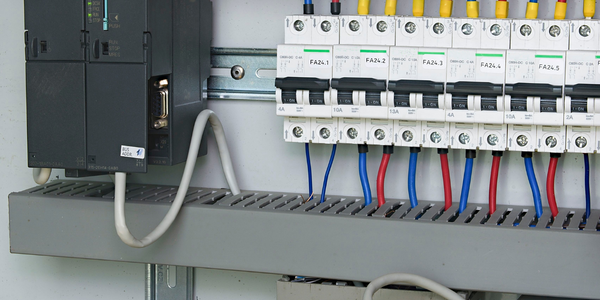Customer Company Size
SME
Region
- Pacific
Country
- New Zealand
- Australia
Product
- Acumatica Financial Management
- Acumatica Distribution Management
- Acumatica Customer Management
- JAAS Advanced Manufacturing Software (JAMS)
Tech Stack
- ERP System
- Web-based ERP
Implementation Scale
- Enterprise-wide Deployment
Impact Metrics
- Productivity Improvements
- Brand Awareness
Technology Category
- Functional Applications - Enterprise Resource Planning Systems (ERP)
Applicable Industries
- Electronics
Applicable Functions
- Discrete Manufacturing
- Procurement
Use Cases
- Manufacturing System Automation
- Inventory Management
Services
- System Integration
About The Customer
Founded in 2007, Triode Group Limited is a New Zealand-based manufacturer of parts for the electronics industry. Four years after starting in 2007, it found itself in a situation with which many start-ups can identify: as its business grew, it grappled with an increasing load of complex information which had to be shared among a growing pool of staff, vendors and customers. The firm struggled to organize its data with Microsoft Excel spreadsheets, PDF files and accounting software. The company is headquartered in New Zealand with other operations in Australia, serving more than 200 customers ranging from one-person firms to large multi-national corporations.
The Challenge
Triode Group Limited, a New Zealand-based company manufacturing parts for the electronics industry, was struggling with managing complex information as its business grew. The firm was using multiple spreadsheets, folders, files and even word-of-mouth to share information. To extract data on one job, they had to open something like five documents. None of the different systems they were using were talking to each other. This led to employees wasting time looking for parts that were not properly tagged, and would mistakenly buy parts the firm already had on its shelves. The problem just got bigger and bigger and it was a real nuisance. They realized they needed a proper system.
The Solution
Triode Group Limited wanted a nimble and flexible ERP system which would easily accommodate its existing processes. They also wanted a web-based ERP, accessible from a browser, because it stored goods in Australia and staff there needed to access and upload information real-time. After seven months of research, the company narrowed down the choice to Acumatica and SyteLine, a mid-sized ERP software package sold by Infor. Triode ultimately chose Acumatica in large part because of its integrated manufacturing software known as “JAMS” (for “JAAS Advanced Manufacturing Software”). The other key reason for selecting Acumatica was the fact that the company would not have to pay for individual user licenses. The company purchased the Acumatica Financial Management, Distribution Management and Customer Management suites, with JAMS, on a perpetual license. It chose to host Acumatica on its server in a nearby city. Acumatica was deployed in early 2012, in a smooth three-month transition.
Operational Impact
Quantitative Benefit

Case Study missing?
Start adding your own!
Register with your work email and create a new case study profile for your business.
Related Case Studies.

Case Study
Remote Temperature Monitoring of Perishable Goods Saves Money
RMONI was facing temperature monitoring challenges in a cold chain business. A cold chain must be established and maintained to ensure goods have been properly refrigerated during every step of the process, making temperature monitoring a critical business function. Manual registration practice can be very costly, labor intensive and prone to mistakes.

Case Study
Predictive maintenance in Schneider Electric
Schneider Electric Le Vaudreuil factory in France is recognized by the World Economic Forum as one of the world’s top nine most advanced “lighthouse” sites, applying Fourth Industrial Revolution technologies at large scale. It was experiencing machine-health and unplanned downtime issues on a critical machine within their manufacturing process. They were looking for a solution that could easily leverage existing machine data feeds, be used by machine operators without requiring complex setup or extensive training, and with a fast return on investment.

Case Study
Cloud Solution for Energy Management Platform-Schneider Electric
Schneider Electric required a cloud solution for its energy management platform to manage high computational operations, which were essential for catering to client requirements. As the business involves storage and analysis of huge amounts of data, the company also needed a convenient and scalable storage solution to facilitate operations efficiently.

Case Study
Leveraging the IoT to Gain a Competitive Edge in International Competition
Many large manufacturers in and outside Japan are competing for larger market share in the same space, expecting a growing demand for projectors in the areas of entertainment, which requires glamor and strong visual performance as well as digital signage that can attract people’s attention. “It is becoming more and more difficult to differentiate ourselves with stand-alone hardware products,” says Kazuyuki Kitagawa, Director of Service & Support at Panasonic AVC Networks. “In order for Panasonic to grow market share and overall business, it is essential for us to develop solutions that deliver significant added value.” Panasonic believes projection failure and quality deterioration should never happen. This is what and has driven them to make their projectors IoT-enabled. More specifically, Panasonic has developed a system that collects data from projectors, visualizes detailed operational statuses, and predicts issues and address them before failure occurs. Their projectors are embedded with a variety of sensors that measure power supply, voltage, video input/ output signals, intake/exhaust air temperatures, cooling fan operations, and light bulb operating time. These sensors have been used to make the projector more intelligent, automatically suspending operation when the temperature rises excessively, and automatically switching light bulbs. Although this was a great first step, Panasonic projectors were still not equipped with any capability to send the data over a network.









